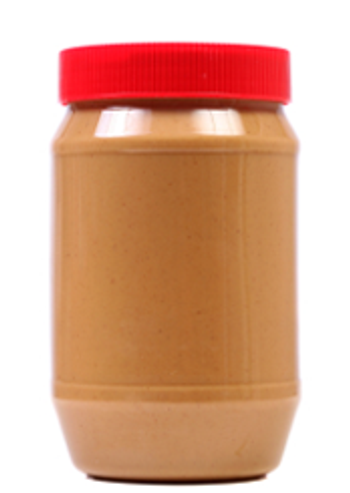
Peanut butter and a ruler may turn out to be tools that offer an inexpensive, sensitive, and specific olfactory means of screening for Alzheimer disease. Details here.

Peanut butter and a ruler may turn out to be tools that offer an inexpensive, sensitive, and specific olfactory means of screening for Alzheimer disease. Details here.

The real impact of nutritious menu changes at fast food chains like McDonalds remains to be seen, but these-along with modifying the dosage schedules of patients who appear to be statin-intolerant-may prove to have long-term salubrious effects.

A new study finds that intermittent dosing of a statin can be an effective treatment option for some patients who previously demonstrated intolerance to statins.

Here: how omega-3 fatty acids may help reduce the risk of atrial fibrillation (AF) in postcardiac surgery patients; how incident HF can help predict adverse outcomes in patients with AF; and why an old gout drug may help reduce the risk of AF in patients with heart failure.

PREVAIL study of Watchman left atrial appendage closure device confirms device safety and meets primary safety endpoint.

The strategy of catheter ablation–based rhythm control in patients with long-standing persistent atrial fibrillation (AF) plus heart failure (HF) was found superior to pharmacologic rate control for improving cardiopulmonary exercise capacity, quality of life, and neurohormonal status in this small, randomized study.

Atrial fibrillation can do a great deal of damage. This is a reality that those who regularly drink more than moderately need to be made aware of.

Something new to worry about: this study shows that atrial fibrillation is independently associated with increased risk of dementia.

Dark chocolate, tomatoes, and grapeseed oil are just a few of the natural approaches to cardiovascular risk reduction supported by science.

Here: the story of how cocaine was discovered by the Europeans and Americans, how it affected two giants of medicine-and how it played a key role in Detroit's economy and in the formation of what was once one of the world's biggest pharmaceutical companies.

This is the true story of how the Battle of Britain was won, how penicillin was discovered, how the largest pharmaceutical company in the world got its start-and how democracy was saved.

What is a safe, effective, and inexpensive way to reduce the risk of heart attacks, strokes, and dementia? What we eat is a key part of the answer. For one thing, doctors can suggest an appropriate diet to motivated patients, or to those who prefer a non-drug approach.

You might ask-as I did when I heard this story-“how can you feel better [after surgery] when you have no symptoms or exercise intolerance in the first place?”

Tea is the second most widely consumed drink in the world. There have been numerous studies of the relationship between tea consumption and vascular disease. Although most such studies have found a negative correlation between these two,1-4 some have shown no association,5 and 1 study has even suggested that increasing tea consumption is associated with greater risk of coronary artery disease.

The development of more sophisticated testing modalities now permits the identification of coronary artery narrowing in asymptomatic adults. The images obtained in these studies provide potential targets for intervention-based therapy.

The prevention of symptomaticcoronary heart diseaseand other vascular disordersrepresents a significanthealth care priority, especiallyin a population that is growingolder and more obese. However,a recent survey has shownthat many laypersons-and evensome physicians-do not know allthe target lipid levels that are associatedwith optimal reduction ofcardiovascular risk.

When the QT interval is prolonged, amultifocal ventricular tachycardiasyndrome (torsades de pointes) mayoccur and produce sudden cardiacdeath. QT prolongation can resultfrom congenital abnormalities, suchas the long QT interval syndrome, orfrom certain drugs. Other factors thatincrease the risk of a prolonged QTinterval and torsades de pointes includehypokalemia, hypomagnesemia,older age, female sex, low ventricularejection fraction, ischemia,and low heart rate.

Heart failure statistics are daunting:550,000 new cases each year, a 1-yearmortality rate of nearly 20%, and annualdirect and indirect costs that total $24.3billion.1 The diverse etiology of heartfailure and the complex, progressivecourse of the disease can make treatmentdecisions daunting as well.

A major controversyin cardiologytoday iswhether loweringthe level oflow-density lipoprotein cholesterol(LDL-C) to substantiallybelow 100mg/dL-the current NationalCholesterol EducationProgram goal for patientswith existing coronaryheart disease1-willfurther reduce the incidenceof cardiovascularmorbidity and mortality.

The sale of simvastatin over-the-counter has been approved in the United Kingdom. Is this a first step in permitting other medications for asymptomatic diseases (such as hypertension) to be available over-the-counter? Dr Nash calls for a national debate on the availability of drugs to consumers.

For years, cardiologists and primary care physicians have engaged in a spirited debate about the appropriate target for low-density lipoprotein cholesterol (LDL-C) lowering in patients with coronary artery disease.

Now that the role of inflammation in the pathogenesis of cardiovascular disease has been recognized, biomarkers of inflammation have become the subject of intense research interest. Once considered a novel cardiovascular risk factor, the inflammatory biomarker C-reactive protein (CRP) is currently believed to improve global risk prediction in patients not previously deemed at high risk.

ABSTRACT: A host of evidence supports the treatment of high levels of low-density lipoprotein (LDL) cholesterol with HMG-CoA reductase inhibitors (statins), which are effective in both primary and secondary prevention of coronary heart disease (CHD). Studies have shown that statins prevent first cardiac events in otherwise healthy persons with elevated LDL cholesterol and low high-density lipoprotein cholesterol levels. Statins are also associated with a reduction in cardiac death, stroke, hospitalization, and the need for revascularization in patients with established CHD and hyperlipidemia. Secondary prevention trials of statin therapy that included persons aged 65 to 75 years found significant risk reduction in this age group. Among the concerns associated with statin treatment are lack of proper titration, failure to achieve LDL target goals, and underuse in patients with established CHD.

Despite the manydouble-blind,placebo-controlledtrials thathave demonstratedthe efficacy of statins inreducing the risk of cardiovascularevents, a largenumber of patients who aretreated with these drugsstill experience suchevents. This may be becausepatients who requireintensive lipid lowering arenot receiving adequatedosages of statins.

ABSTRACT: Diuretics remain a mainstay of heart failure therapy. Angiotensin-converting enzyme (ACE) inhibitors and ß-blockers inhibit activation of neurohormonal systems; these agents are recommended for most patients with symptomatic systolic heart failure. Angiotensin II receptor blockers (ARBs) are alternatives for patients who are unable to tolerate ACE inhibitors. Recent trials suggest that ARBs are also useful when added to the regimen of patients with a low ejection fraction. Although digoxin can provide long-term inotropic support in men, it significantly increases the risk of mortality in women; because of the risk of toxicity, use digoxin with caution in older persons and patients with renal dysfunction. Consider an aldosterone antagonist in patients who remain symptomatic at rest despite the use of a diuretic, digoxin, an ACE inhibitor or an ARB, and a ß-blocker. Lifestyle modifications such as dietary restriction and exercise are helpful in all patients.

ABSTRACT: Results of the Heart Protection Study (HPS)-the largest prospective statin trial to date-have confirmed that the cardioprotective effects of statin therapy extend to high-risk patients regardless of age, sex, or baseline serum cholesterol levels. Yet despite compelling efficacy data, statins are not prescribed as often or as aggressively as they should be, even among patients at high risk for coronary heart disease (CHD). Recent studies have shown a significant reduction in the risk of CHD among patients 65 years and older with statin treatment. These agents are also recommended as first-line therapy for prevention of CHD in postmenopausal women. Statins appear to be cardioprotective even in patients with average baseline serum total cholesterol levels.

More than1.8 millioncardiaccatheterizationsandat least 600,000 percutaneoustransluminal coronaryangioplasty (PTCA)procedures are performedin the United States annually.1 The use of these diagnosticand interventionalmodalities continues togrow even as financial constraintsincrease. Yet formany patients with coronaryartery disease (CAD),medical therapy may be anappropriate option.

Heart failure(HF), the mostcommon Medicarediagnosisrelatedgroup,has a significant and growingimpact on health careresources. The incidenceof HF has tripled during thelast decade. Almost 5 millionAmericans have HF, and anestimated 500,000 new casesare diagnosed yearly. Thelifetime risk of HF is about20%.1 Drug therapy has improvedconsiderably in recentyears, but the magnitudeand severity of theproblem has created a needfor newer therapies--particularlysince HF is associatedwith an increased risk ofsudden death and a diminishedquality of life.2

Although the cardiovascular death ratehas declined in the United States, thenumber of hospitalizations for cardiacdisease has not. The improvement incare has been offset by an increase inthe number of older Americans. By2050, more than 100 million Americanswill be 60 years of age or older,and about 30 million will be older than80 years.

Published: March 2nd 2008 | Updated:

Published: December 21st 2012 | Updated:

Published: January 2nd 2013 | Updated:

Published: February 13th 2013 | Updated:

Published: February 14th 2013 | Updated:

Published: March 15th 2013 | Updated: